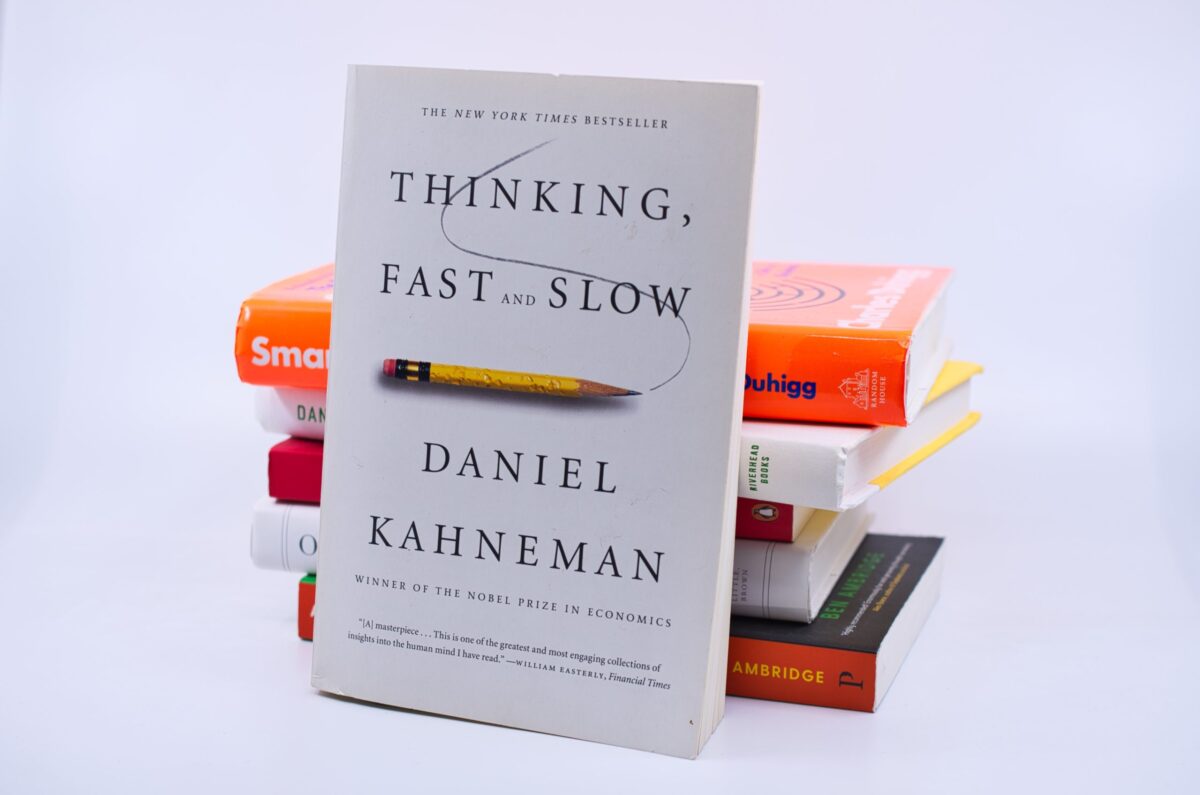Can you believe it? 92% of employees say they are more likely to stay with an empathetic employer. That’s not ten or twenty percent. It’s not fifty or seventy-five. It’s ninety-two percent! That’s almost everybody.
If so many workers want this quality in their boss, it must be pretty important!
I recently asked an audience, “Why do you think an empathetic leader is so in demand? What do you think people are really wanting in this?”
They responded:
“I want to know that I am cared for.”
“I want to know I can trust them.”
“I like to be heard, considered, and acknowledged. It helps me work better.”
“My last boss was empathetic. She listened to me. She didn’t go ballistic when I made a mistake. She seemed empathic towards my shortcomings. I noticed that boosted my morale, and my performance got so much better! It’s nice to know somebody’s on my team!”
“When my boss helped me understand what was going on behind the company’s mission, I felt inspired to get on-board with it. I enjoy my work more when I feel I’m contributing to the big purpose.”
“I’ve noticed that it really enhances my performance when I have personal interaction with my managers and boss, when they listen to me. I like to be seen and heard.”
It seems like leaders with a high capacity in empathy meet many social needs, such as being heard, understood, acknowledged, cared for and encouraged. When these social needs (like any needs) get met, people get happier. And as we all know- when people are happy, they do their best work.
What Empathy Is
For many, empathy is an enigma. Certainly, none of us learned about it in school. Some of us may have learned it at home, but it was never really pointed out as a skill that was important or needed. And now, it seems empathy could be an advantageous skill to have– at work or at home. So, let’s take a look at what empathy is, what it’s not, and a few simple things you can do that will have your folks feeling like they’d like to stick around.
A common definition of empathy is, “The ability to understand and share the feelings of another.” A famous quote on empathy states: “Empathy is about finding echoes of another in yourself.” My personal definition is: “Empathy is being with someone who is hurting, & letting them know they’re not alone. Then healing can happen.”
Like a child with a scraped knee on mother’s lap, we all feel comforted and more able to rebound when others are there with us when we’ve been knocked down. We all feel better when others are caring towards our pain.
Empathy is a social skill, an EQ parameter. It helps us show up as caring, supportive, giving, understanding and trustworthy. It helps relationships take blossom, grow, last and have meaning.
Think of the last close friend you made, maybe it was romantic. Or think of a time you were holding one of your kids in tears. Recall how you were able to “be” with them when they shared their troubles with you. Remember how effortlessly your heart opened and embraced them, how just being there really made their distress lessen. Empathy is a skill you already have, but maybe now, you recognize the benefits of bringing it to bear in less “personal” situations.
What Empathy is Not
Confusion often arises when thinking about the differences between pity, sympathy, empathy and compassion. While they all live in the same neighborhood, they are quite different.
Pity acknowledges another person’s suffering. It says things like, “I see that you’re upset” or, “Oh, too bad”. And then usually walks away.
Sympathy says they care about your suffering, but they’re not necessarily with you in your suffering. Sympathy can sound something like, “Oh that’s too bad! Hmmmm. Let’s go get an ice cream.” Sympathy tries to make things better. Sympathy also says things like, “Well, at least _____ didn’t happen. For example, “Woa! You had a car crash! Well, at least you didn’t break your neck”.
Empathy recognizes the person is suffering, but can also sense or feel their suffering. It says things like, “Ugh! This sucks!” and then just looks at them and says nothing. Empathy sounds like: “I get that this is really hard for you, and I’m here with you.” Recalling a similar difficulty in your own past, will let them know you get it. You don’t have to know exactly what they’re feeling or have had the exact experience. You can just say, “I’m here with you,” and then be there, be present. Somehow, when the person in pain gets that they’re not alone in their pain, the difficulty diminishes.
Compassion goes a bit further. It says- “I want to relieve your suffering.” Think Mother Theresa. Innumerable non-profits have come out of the compassionate space. Their work is to relieve the suffering of the world. Bless them!
When you are talking with someone having a difficulty, you might take a moment to observe what kind of response you most readily go to? Is it pity, sympathy, compassion or empathy?
If you feel like interrupting them and then darting stage left, it’s not empathy. If you’re trying to take their pain from them or fix it, it’s not empathy. If you’re moved to chime in with some sage advice or offer no-fault solutions- neither is that empathy. Empathy is much more like tuning into to where someone is at in the moment, no matter how difficult for them, and then being there with them without saying anything.
3 Skills to Build Your Empathy Muscle
So far, we’ve seen that empathy is basically about listening to, understanding, and connecting with others. Let’s take a closer look now at each of these skills- listening, understanding and connecting- and see how they can take you ever closer to being an empathetic champ.
LISTENING
People usually deem themselves as good listeners, since we’ve all been listening since we were born. Yes, we all know how to listen. The question is- to what degree are we listening? How much of what we’re hearing are we actually taking in and retaining? How much information are we actually able to collect and recall?
To listen we only need the capacity to hear. To listen well, we need presence. We need attention, focus and an open mind and heart. We need curiosity.
Reflect for a moment. How do you feel when others listen to you? I mean really listen. Like they put their phone in their pocket, they look at you, they lean in, they are attentive to your words, gestures and emotions, they nod their head and resonate with what you are saying. How does it feel to be seen, heard, and understood? To be cared for?
So, to come across as empathetic, the first thing is to get present. Put your phone away, take a deep breath, and sense your arms and legs. Then, look at the person talking to you.
Pay attention to them. Take note of what they are saying-on all levels- with their words, tone of voice and with their body. Listen without interrupting or speaking. Listen without ruminating about what your response will be. Just listen, paying such close attention that you could repeat what they just said.
An advanced skill in listening well is to succinctly recap what you heard them say. This lets the speaker know they have been heard. Recapping brings the message that they matter and that you care. Recapping creates a deeper connection between people and a sets a foundation for trust.
It can be challenging. Listening to others talk about their difficulties, pain, losses, failures … is hard! It’s not easy to be present when others are struggling. Know that you do them a great service by being present and listening intently as they vent. Acknowledge yourself for your maturity and capacity to serve others in a real way. (This can be at work with co-workers, team members, or at home with your kids, spouse, or parents.) Honor your capacity to set the stage for a real connection to grow and for real healing to take place.
As you practice and build the skill of empathy- of staying present as others complain or unload about their hard-times, notice your level of discomfort with the situation, your impulse to get away, your mind going into judgement. These responses are all completely natural.
If these reactions are going on for you while listening, you can take a few deep breaths, sense your arms and legs. That will help ground you, keep you present. Put on your big boy/girl panties. Be courageous. Know you can do this. Let go of your judgments. Notice that you are okay, safe, that all is well. Practice makes better, so practice.
Mastering the skill of listening can make your presence increasingly more helpful, supportive, even healing. Know that the skill of listening well ultimately yields trust, loyalty and longevity in relationships, and that brings a lot of joy. 9.5
UNDERSTANDING
A big part of empathy is attempting to understand the feelings of another. It’s not enough just to be aware of the words another is saying to you. You also need to make sense of their message. Understanding another includes considering how their troubles might be impacting their lives, job, situations, relationships, etc.
Another aspect of understanding is imagining what it might be like to be them. You may not know what it’s like to lose a child. But you may recall what it’s like to lose your favorite pet. You have experienced and therefore understand loss, and you can call on that memory to relay empathy. We may not have had the “same” experience as the person you’re listening to. But you have had similar experiences- because we all know frustration, hurt, pain, loss, failure, not-enough-ness.
This is where vulnerability- that favorite 4 letter word, comes in. If we can courageously call-up a similar hardship from our own past, we can get on the same page with them, we can really understand them. And they can feel it! And that’s when connection happens, (and healing).
A benefit of understanding another is that you can use the information you get to interact with this person more effectively in the future. Let’s say you find out that they have a deep fear of making mistakes. Empathy expresses itself then as treading gently when you give that person an evaluation or feedback in the future.
An advanced skill in understanding is helping your friend, co-worker or family member get an insight about their situation. You can get this insight by asking yourself a few simple questions- What are they wanting? Needing? Asking for?
For example, your co-worker is complaining that she feels like her life is going nowhere, like she’s running furiously on a hamster wheel. You ask yourself, what is she really needing right now? You get the sense that what she’s really wanting is recognition for her work. As you gently share this, the lights go on inside of her. She now has something concrete to work with, a challenge to overcome, a need to meet– instead of just a big heap of frustration.
When you can provide insights into what your troubled employee, co-worker, friend or child is wanting or needing, the doors to connection, trust, loyalty and cooperation swing wide open.
For greater understanding, be curious. Let your mind be open and inquisitive. Ask them questions. Inquire. Draw out more details about their experience. This helps build bridges between people. And may give you insights on how to make things better for them, for their team, for everyone.
CONNECT
Besides the things already mentioned, the best way to connect with others is quite simple. It’s to engage the part of our human capacity built for connection- your heart. Moving your awareness from your head to your heart creates the foundation for being able to connect with anybody, anywhere, anytime.
I found it interesting to learn that the function of the brain is quite different than the function of the heart. Even as they are both ‘wisdom centers’, the kind of wisdom they give us is quite distinct.
The brain, particularly the left side of the brain perceives differences. Its function is to discern, compare, analyze, and dissect. It separates.
The heart, and particularly the right side of the brain, perceives oneness, sameness, unity. Its job is to bridge differences, find commonalties, and to merge.
So, the heart see sameness. The brain sees differences. When your awareness move from your head to your heart, you open the door to experiencing sameness with another person, in other words, you open the door to connection.
When you’re present in your heart talking to someone going through a hard time, you reflect on things like, “Oh. This person is a human being—like me. I’ve had these kinds of experiences. They have ups and downs—I have ups and downs. They have feelings- just like I do. Oh, I’ve felt that before. I know what that’s like.” And maybe you don’t say any of that out loud, but the sensibility of sameness creates a bridge between you and them. It creates the sense that they are not alone.
So, when you’re with somebody and your noticing that they are experiencing some sort of upset, frustration, loss, sadness, take a deep breath, and as you exhale, let your attention move down to your chest. Notice your chest rising and falling as you breathe. Let your heart open. Notice how it changes your experience of being able to feel into what they might be experiencing, into walking in their shoes.
You might imagine what it’s like to be them. You can ask yourself, “What might it be like to have that experience? What would it be like to have that illness, that challenge, that difficult child? What could that possibly be like?” When your heart is open it’s easy to get on the same page with someone else, even if their world is totally foreign to you. With an open heart, you can connect with where they’re at in the moment. That’s the whole point of empathy.
Empathy is a skill you can learn and build by listening intently, understanding and connecting with others. It requires courage, vulnerability and practice. Empathy supports others getting through difficult times, and creates the foundation for healthy, meaningful and lasting relationships.
Be the leader people want to stick with. Remember? Almost everybody wants a boss who is capable of empathy. When a leader can express empathy effectively, they meet many social needs of their people, they build trust, loyalty, and alignment with the company’s mission. They create a culture that fosters team work, collaboration, cooperation and inclusion.
Under these circumstances, employees at all levels flourish. When people are at their best, they give their best, and then the whole company can blossom and fulfill its potential. Build your empathy muscle and watch your organization soar!


















